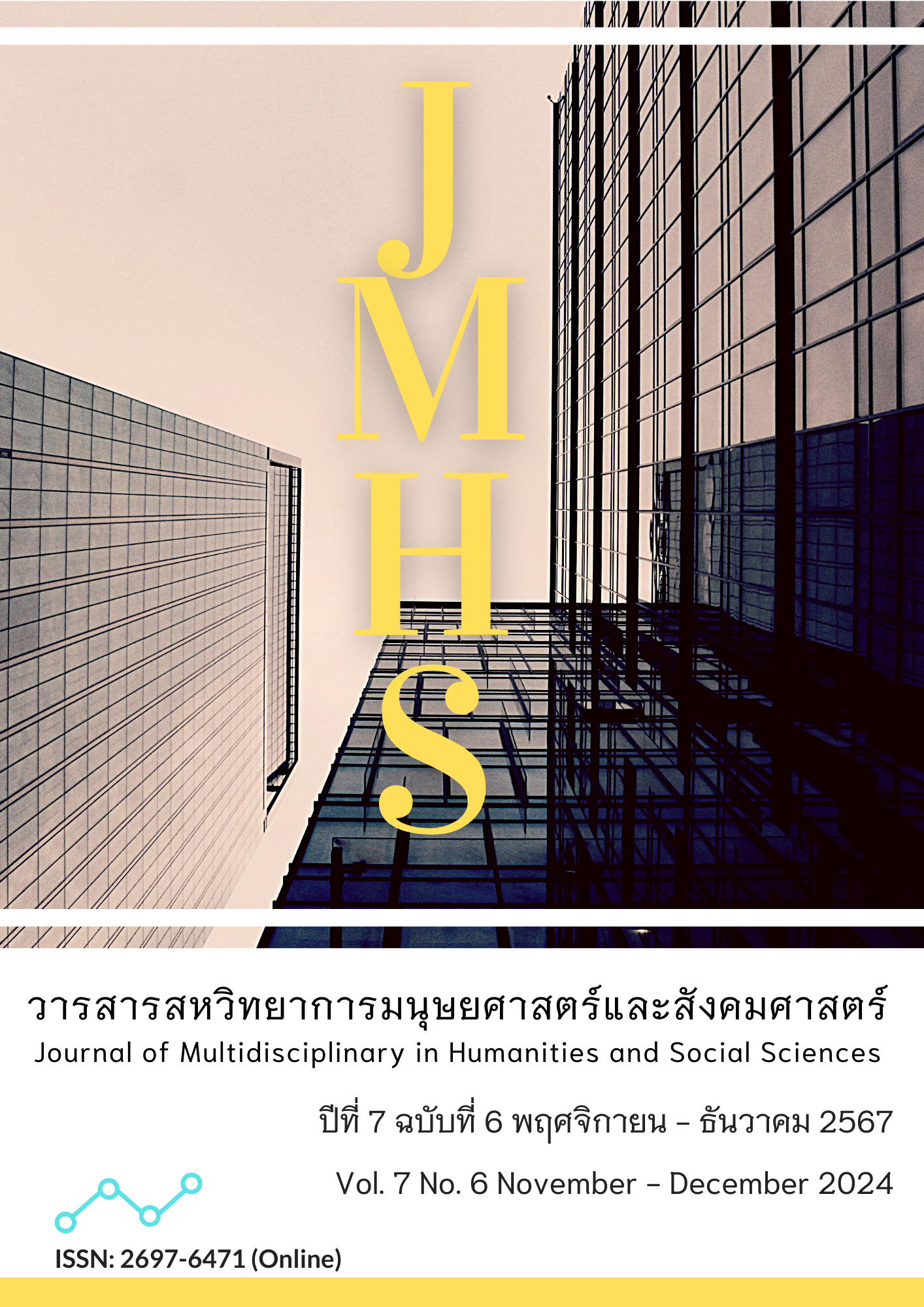Efficiency of Educational Opportunity Expansion Schools in Chonburi Province: An Application of Data Envelopment Analysis and Tobit Analysis
Main Article Content
Abstract
The objectives of the research were 1) to measure the technical efficiency of educational opportunity expansion schools in Chonburi province and 2) to investigate determinants of educational opportunity expansion schools in Chonburi province. This study was quantitative research and employed secondary data from 74 Educational Opportunity Expansion Schools in Chonburi province conducted by the National Institute of Educational Testing Service (Public Organization), Thailand. Data were analyzed by using data envelopment analysis and Tobit regression.
The research results were as follows: 1. The result of measuring the level of technical efficiency of educational opportunity expansion schools based on data envelopment analysis revealed that the schools associated with the high efficiency score of 0.67-1.00 accounted for 45.90 percent, and the schools associated with the moderate efficiency score of 0.34-0.66 accounted for 54.10 percent. 2. A Tobit regression analysis indicated that the standard deviation of the average O-NET score in Thai language and class size were significantly and negatively associated with technical efficiency scores of educational opportunity expansion schools in Chonburi province. However, the ratio of male students to female students, the ratio of foreign to Thai students, students with special needs in class, the ratio of public school to temporary teachers, the ratio of teachers who graduated with a master’s degree or higher to teachers who graduated with qualifications lower than a master’s degree, the ratio of teachers with a professional level or higher to teachers with qualifications lower than a professional level, school size, and school location were not significant factors determining the technical efficiency of educational opportunity expansion schools in Chonburi province.
Article Details

This work is licensed under a Creative Commons Attribution-NonCommercial-NoDerivatives 4.0 International License.
Views and opinions appearing in the Journal it is the responsibility of the author of the article, and does not constitute the view and responsibility of the editorial team.
References
ธีระ รุญเจริญ. (2553). ความเป็นมืออาชีพในการจัดและบริหารการศึกษายุคปฏิรูปการศึกษา (ฉบับปรับปรุง) เพื่อปฏิรูปรอบสองและประเมินภายนอกรอบสาม. กรุงเทพฯ: ข้าวฟ่าง.
นาซีฟะ เจ๊ะมูดอ. (2560). การประเมินประสิทธิภาพโรงเรียนตาดีกาในสามจังหวัดชายแดนภาคใต้ด้วยวิธีการ DEA (Data envelopment analysis). วารสารศึกษาศาสตร์ มหาวิทยาลัยสงขลานครินทร์ วิทยาเขตปัตตานี, 28(3), 128-138.
วรรณพร เรืองรัตน์. (2556). การวัดประสิทธิภาพการจัดการศึกษาของโรงเรียนมัธยมศึกษาของรัฐกรณีศึกษาโรงเรียนระดับมัธยมศึกษาชั้นปีที่ 3. วารสารบริหารศาสตร์ มหาวิทยาลัยอุบลราชธานี, 2(3), 38-48. สืบค้นจาก https://so03.tci-thaijo.org/index.php/jms_ubu/article/ view/85926
ศรชัย มุ่งไธสง, ยุพิน จันทร์เรือง, สุทัศน์ คล้ายสุวรรณ์, ปฏิพันธ์ อุทยานุกูล, เบญจวรรณ สุขวัฒน์, วรรณวิรัตน์ ตุงคะเวทย์ และ สุกัญญา ขลิบเงิน. (2560). สภาพและปัญหาการจัดการเรียนการสอนภาษาไทยของนักเรียนบนพื้นที่สูงกลุ่มโรงเรียน สังกัดสำนักงานเขตพื้นที่การศึกษาประถมศึกษาเชียงราย เขต 3 จังหวัดเชียงราย. วารสารสังคมศาสตร์วิชาการ, 10(พิเศษ), 09-22. สืบค้นจาก https://so04.tci-thaijo.org/index.php/social_crru/article/view/134374
ศุภวัจน์ รุ่งสุริยะวิบูลย์. (2558). เศรษฐศาสตร์การผลิต: การวัดผลิตภาพและประสิทธิภาพ. กรุงเทพฯ: มหาวิทยาลัยธรรมศาสตร์.
สถาบันส่งเสริมการสอนวิทยาศาสตร์และเทคโนโลยี. (2558). ปัจจัยที่ทำให้ระบบโรงเรียนประสบความสำเร็จ ข้อมูลพื้นฐานจากโครงการ PISA 2012. กรุงเทพฯ: กระทรวงศึกษาธิการ.
สำนักงานคณะกรรมการการศึกษาแห่งชาติ. (2535). แผนพัฒนาการศึกษาแห่งชาติ ฉบับที่ 7 (พ.ศ. 2535-2539). กรุงเทพฯ: สำนักงานคณะกรรมการการศึกษาแห่งชาติ.
สำนักงานเลขาธิการสภาการศึกษา. (2564). รายงานการศึกษาการพัฒนาคุณภาพผู้เรียนจากผลการทดสอบ O-NET และ PISA. กรุงเทพฯ: สำนักงานเลขาธิการสภาการศึกษา.
อรรถพล สืบพงศกร. (2555). ระเบียบวิธีการของ Data Envelopment Analysis (DEA) และการวัดประสิทธิภาพเชิงเทคนิค. วารสารเศรษฐศาสตร์ มหาวิทยาลัยเชียงใหม่, 16(1), 50-88. สืบค้นจาก https://so01.tci-thaijo.org/index.php/CMJE/article/view/61209
อัครพงศ์ อั้นทอง. (2547). คู่มือการใช้โปรแกรม DEAP 2.1 สำหรับการวิเคราะห์ประสิทธิภาพด้วยวิธี Data Envelopment Analysis. เชียงใหม่: มหาวิทยาลัยเชียงใหม่.
Batool, T., & Chaudry, M. O. (2019). Determinants of Efficiency of Public Schools in Pakistan A Case Study of Multan District. Journal of Economics and Sustainable Development, 10(9), 15-22. https://doi.org/10.7176/JESD/10-9-03
Kantabutra, S., & Tang, J. C. (2006). Urban-Rural and Size Effects on School Efficiency: The Case of Northern Thailand. Leadership and Policy in Schools, 5(4), 355-377. https://doi.org/10. 1080/15700760600968416
Tobin, J. (1958). Estimation of Relationships for Limited Dependent Variables. Econometrica: Journal of the Econometric Society, 26(1), 24-36. https://doi.org/10.2307/1907382
Yahia, F. B., & Essid, H. (2019). Determinants of Tunisian Schools’ Efficiency: A DEA-Tobit Approach. Journal of Applied Management and Investments, 8(1), 44-56.

